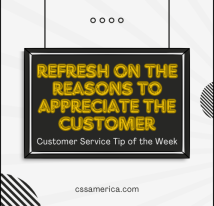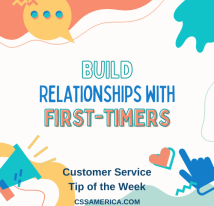Take a look at these mottos:
It’s the real thing.
Just Do It.
Have it your way.
Betcha can’t eat just one.
Breakfast of champions.
Do you know the companies? The answers are at the bottom of this tip.
So why am I asking you about mottos? And why do almost all of them make me hungry? I digress…
I’m asking about mottos in part because they are memorable. They reflect what the companies are trying to convey, what the companies are trying to be or to become.
A motto or a tagline is something often catchy, often short. My company, CSS, created a Mission Statement that is our statement of purpose, but it’s also short and easy to remember: To help others
When I’m speaking with someone, my thought is: How can I help them? I know that whether it’s an existing client or prospective customer, whether it’s a co-worker or another member of my team, whether it’s a business partner or somebody I just run into at the office who seems to have a question or wants to talk – that’s my primary focus: How can I help them?
Whether or not I make the perfect presentation or make a sale, at least my goal is to help them. Whether they have some business concern that we can address or something that is not in our wheelhouse, the least I can do is try to help them. Whether they need advice or guidance or just need somebody to listen, my goal is to meet that need.
We’ve talked about personal mission statements in the past – that statement of purpose that shows the greater good in what you do. So think about your personal mission statement in terms of a motto. Describe (in fewer than 10 words) your purpose at your job, the guiding principles within which you operate, what you hope to do…or to be…or to become. Write that thought down – and help it to guide you throughout the day.
Create Your Personal Motto.
By the way, here are the companies associated with the mottos above: Coke. Nike. Burger King. Lay’s. Wheaties.
Signup for FREE Tips! Contact Us More Resources for You Visit Our Home Page
























